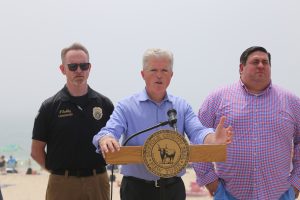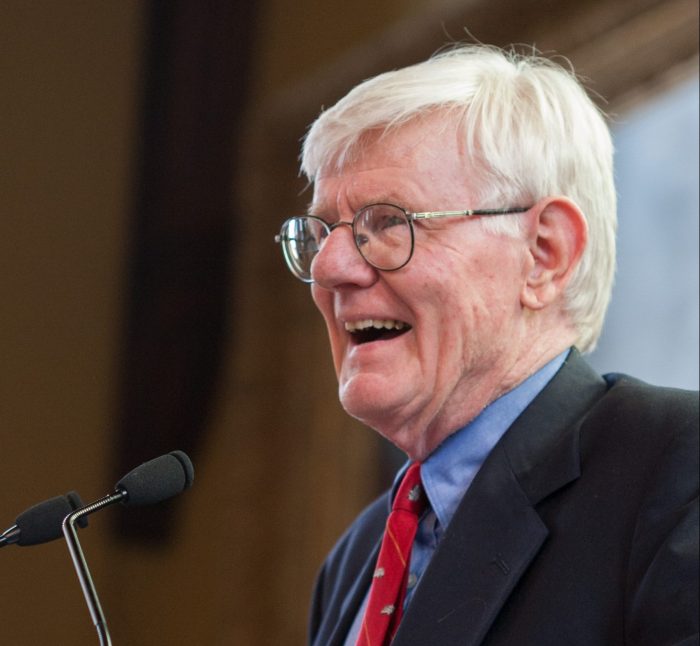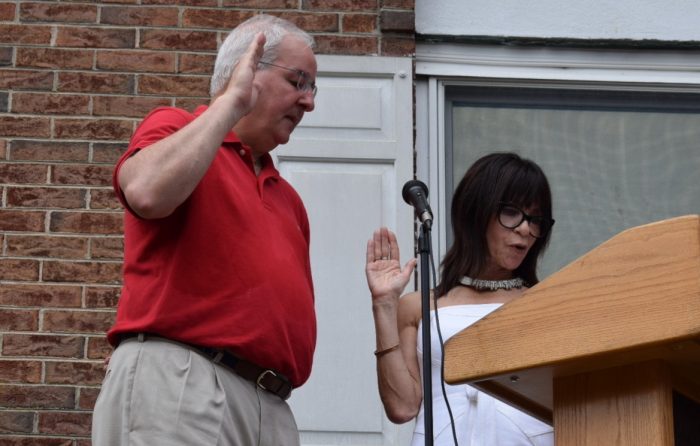Last week’s Fourth of July celebrations brought fireworks, family gatherings, barbecues and interactions between people and sharks.
Independence Day has increased the number of brushes between these apex predators and humans over the last two years, particularly as people head to the beach in larger numbers around the holiday.

Sharks go “wherever there’s salt water” and they often follow bunker fish, which can come closer to shore, said Christoper Paparo, Southampton Marine Science Center manager at Stony Brook University’s School of Marine and Atmospheric Sciences. People encounter sharks around Independence Day because “there are more people around state parks on the Fourth of July weekend.”
Despite potential hysteria and concern about the dangers posed by sharks, most of the encounters around Long Island are “minor” and “not life threatening,” Paparo added.
The waters in the area are a nursery for many species of fish, including sharks. Young sea turtles, dolphins and whales also live along the more protected shoreline.
In recent weeks, five people have reported shark bites along the South Shore. In one incident, a shark bit a 15-year-old boy on the heel and toes. He was hospitalized with non-life-threatening injuries. Also last week, a 15-year-old girl was injured with puncture wounds from an unknown source at Robert State Moses Park.

Suffolk County Executive Steve Bellone (D) recently announced that the county would step up its surveillance efforts, adding two high-tech drones at the ocean beaches.
“Shark bites and shark incidents are something that we’re going to have to be addressing on a more regular basis,” Bellone said at a press conference at Smith Point County Beach announcing the new measures. “It’s simply going to be a part of the routine of what we do out here every day in terms of the monitoring that our ocean lifeguards do.”
Surveillance teams go out on wave runners and paddle boards, while lifeguards also use binoculars to watch over swimming areas.
The county will train lifeguards as drone operators.
“This is not a simple thing,” Bellone said. “This is something that requires skill and expertise.”
As county beaches await the arrival of these new drones, the beaches have area fire and rescue available to respond to any needs.
“Our goal here is first and foremost to keep residents safe,” Bellone added, “and to provide a sense of reassurance and comfort, knowing that when you come to the beaches, we have every tool at our disposal ready to assist.”

Protective measures
Bellone urged the public to take measures to minimize the risk of shark encounters.
The county executive advised people not to swim at dawn or dusk when sharks might be feeding. He also cautioned against swimming toward schools of fish, which might attract sharks who can’t differentiate between a fish and a person swimming.
“Always swim in a lifeguard-protected area,” he added. “Don’t swim when lifeguards are not on duty.”
People who paddle board, kayak or surf should go out in groups.
The sharks in the area are a reflection of a healthy ecosystem, Paparo indicated.
“You need everything below [a shark] to support it,” he said. “If there are no fish or the water is polluted, you won’t see sharks.”
Sharks rely on other senses besides eyesight to find their prey. A swimmer in murky waters can send the same type of electromagnetic signal a shark picks up from a school of fish on the surface of the water.
The sharks “hone in” on the similar sounds, Paparo added.
Paparo also suggested people should avoid swimming near seals, which are prey for great white sharks. That’s not often a problem around Long Island as seals are more prevalent in Massachusetts.
Taking measures like avoiding swimming in murky waters will “increase the odds of not encountering them,” Paparo said.
A range of sharks swim around the waters of Long Island and can include sand tigers, dusky and sandbar sharks.
“We do have mako, blue, thresher, southern, black tip, spinner, scalloped hammerhead and smooth hammerhead,” Paparo said.
Paparo added that the numbers of bites this year — five so far — are still infrequent, especially compared with injuries people sustain in car accidents or other activities.




















